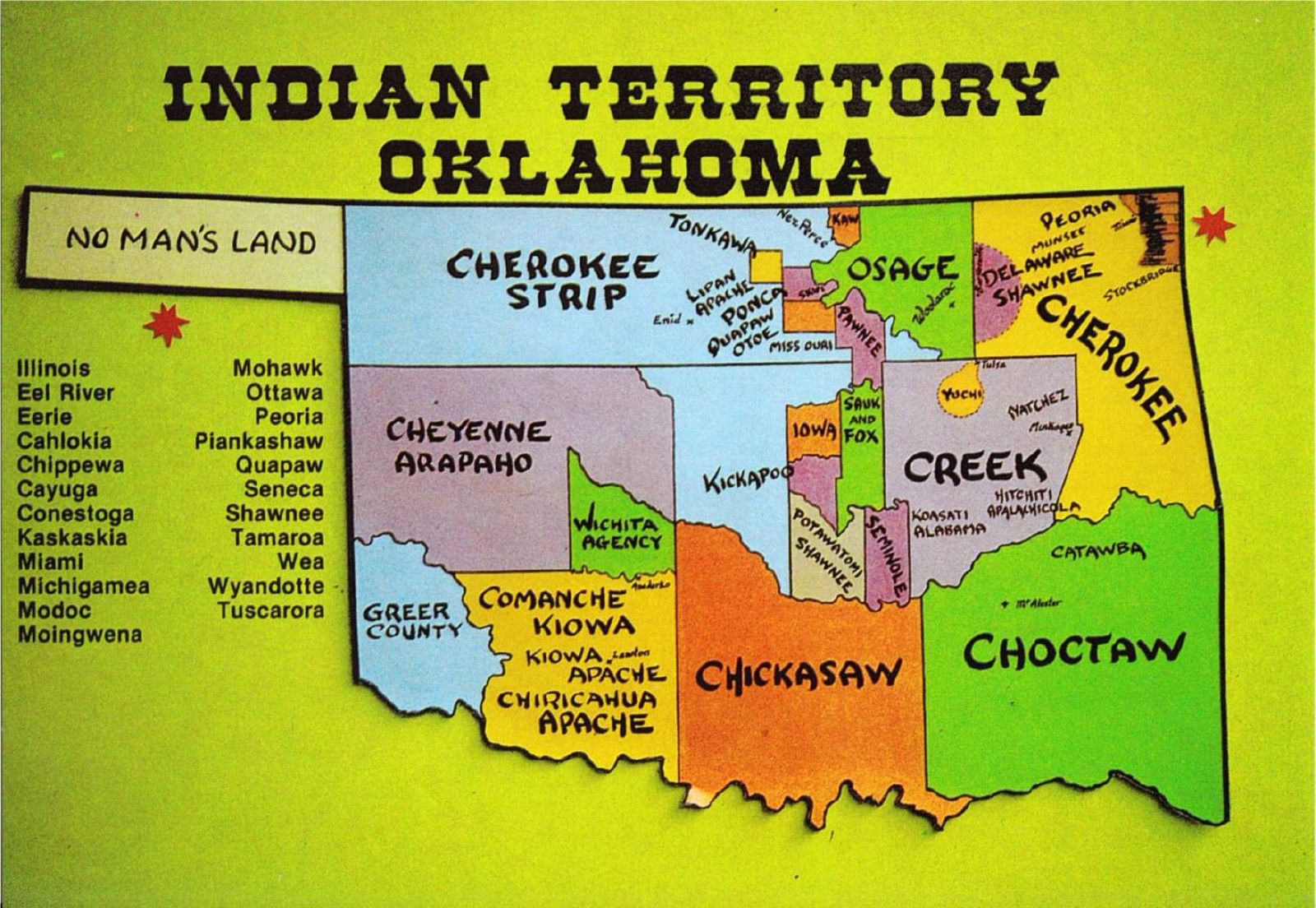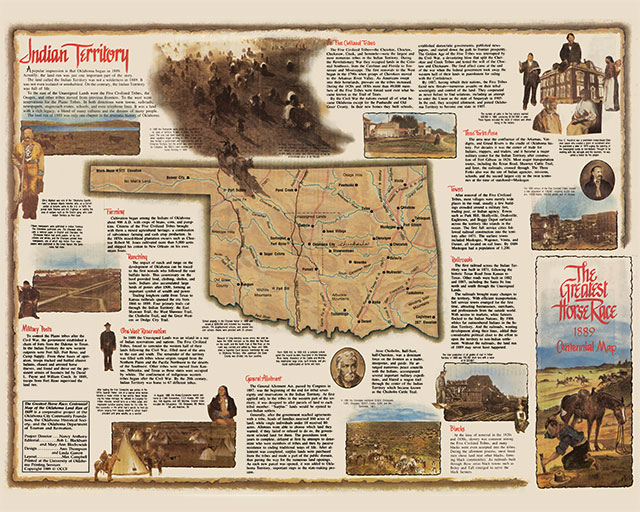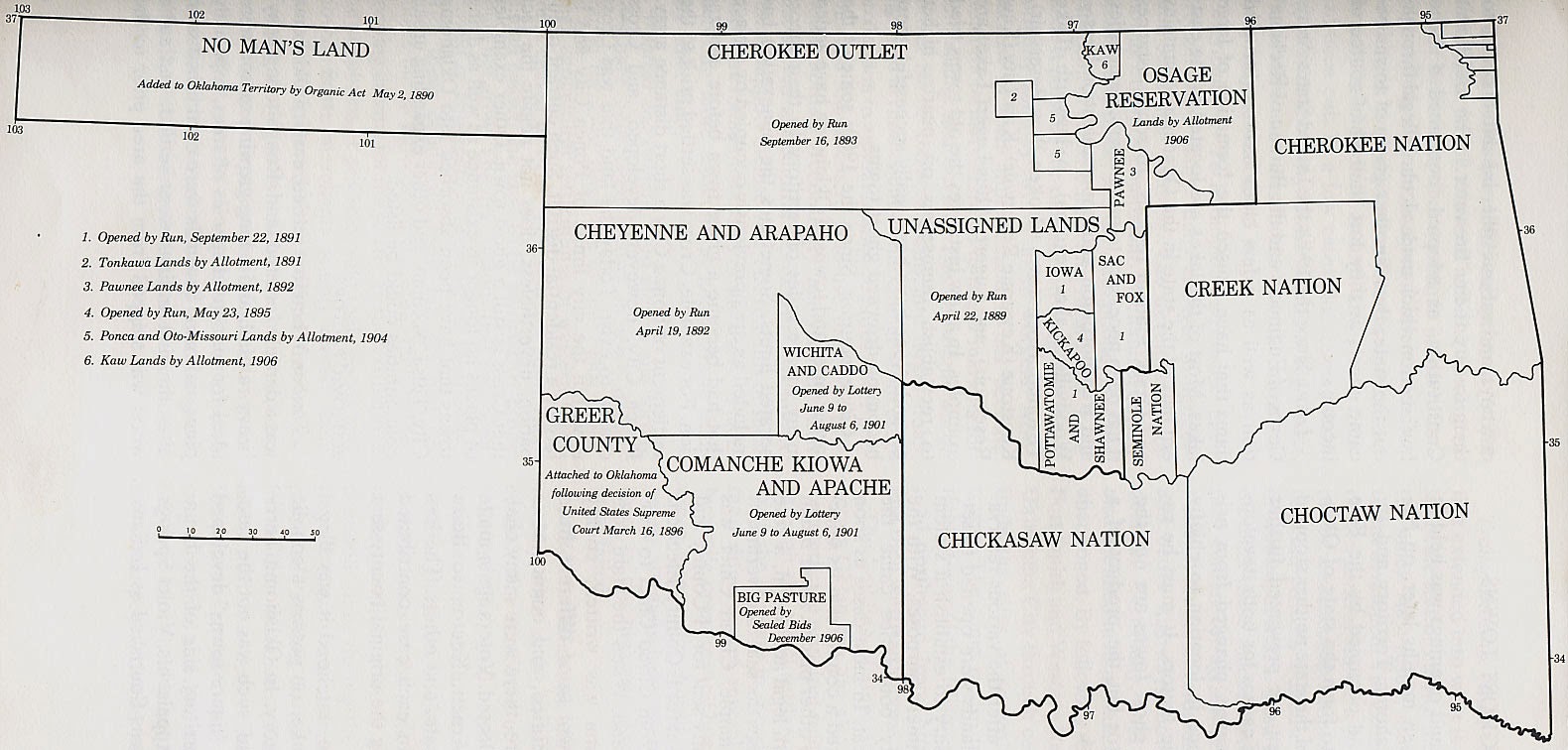Oklahoma: Where the Land Runs Deep with Native American Heritage
Oklahoma: Where the Land Runs Deep with Native American Heritage

Oklahoma’s landscape is as diverse as its history, and nowhere is that more evident than in the presence of its 39 federally recognized tribes. These tribes, each with its own unique language, culture, and traditions, have called this land home for centuries, long before statehood or even the arrival of European settlers. The Oklahoma Indian map, a visual tapestry of tribal lands, tells a story of resilience, survival, and the enduring spirit of Native American culture.
A Land of Forced Removal and Resilience
Related Articles: Oklahoma: Where the Land Runs Deep with Native American Heritage
- Discover the Enchanting World of Indian Reservations in New York State
- Native American Reservations in California: Uncovering a Rich Cultural Legacy
- Unveiling Montana's Enigmatic Indian Realm: A Journey to its Largest Reservation
- Unveil the Enchanting Realm of Native American Indian Tribes in Florida
- Unveiling the Secrets of the Caddo: A Journey into the Heart of Texas Native American Culture
The story of Oklahoma’s Native American tribes is a complex one, interwoven with tragedy and triumph. In the 19th century, the U.S. government forcibly relocated thousands of Native Americans from their ancestral lands in the Southeast to what was then known as "Indian Territory." The Trail of Tears, a forced march of the Cherokee people, remains a haunting reminder of the injustices inflicted upon these tribes. Despite the hardships they faced, the Native American peoples of Oklahoma adapted, thrived, and preserved their cultural identities.
A Tapestry of Tribal Lands
The Oklahoma Indian map showcases the unique geographical footprint of each tribe. From the sprawling lands of the Cherokee Nation in the northeast to the Chickasaw Nation’s territory in the south-central part of the state, each tribe’s land is a reflection of their history, traditions, and ongoing efforts to preserve their heritage. The map is a powerful visual reminder of the deep-rooted presence of Native American culture in Oklahoma.
Beyond the Map: A Rich Cultural Landscape
The Oklahoma Indian map is just a starting point. It’s a gateway to a world of vibrant traditions, ceremonies, and artistic expressions. Each tribe has its own distinct language, dances, music, and art forms. From the intricate beadwork of the Choctaw Nation to the powerful storytelling of the Osage Nation, Oklahoma’s tribes offer a unique window into Native American culture.
Exploring the Cultural Landscape: A Journey of Discovery
For those interested in experiencing the richness of Oklahoma’s Native American heritage, there are countless opportunities to learn and engage. Tribal museums, cultural centers, and art galleries offer a glimpse into the past and present of each tribe. Many tribes host powwows, festivals, and celebrations throughout the year, providing a chance to witness their traditions firsthand.
A Look at Some of Oklahoma’s Tribes

-
The Cherokee Nation: The largest tribe in Oklahoma, the Cherokee Nation is known for its rich language, cultural heritage, and strong sense of community. The Cherokee Nation’s capital, Tahlequah, is a vibrant hub of cultural activity.

The Chickasaw Nation: The Chickasaw Nation has a long history of resilience and innovation. The tribe’s headquarters in Ada is home to a thriving economy, cultural center, and museum.
-
The Choctaw Nation: The Choctaw Nation is known for its strong sense of family and community. The tribe’s headquarters in Durant is a hub of cultural activity, with a museum, art gallery, and cultural center.
-
The Muscogee (Creek) Nation: The Muscogee (Creek) Nation has a rich history of storytelling, music, and dance. The tribe’s headquarters in Okmulgee is home to a cultural center, museum, and art gallery.
-
The Osage Nation: The Osage Nation is known for its rich cultural heritage, including its unique language, ceremonies, and art forms. The tribe’s headquarters in Pawhuska is home to a cultural center, museum, and art gallery.

Beyond the Map: A Call to Action
The Oklahoma Indian map is a powerful reminder of the ongoing fight for tribal sovereignty and self-determination. It’s a call to action for all of us to learn more about the history, culture, and ongoing struggles of Oklahoma’s Native American tribes. By engaging with these communities, we can help to ensure that their voices are heard and their traditions are preserved for generations to come.
FAQ: Oklahoma Indian Map
Q: What is the Oklahoma Indian Map?
A: The Oklahoma Indian map is a visual representation of the lands of the 39 federally recognized tribes in Oklahoma. It showcases the geographical footprint of each tribe and provides a glimpse into their history, culture, and traditions.
Q: Why is the Oklahoma Indian map important?
A: The Oklahoma Indian map is a powerful reminder of the ongoing presence of Native American culture in Oklahoma. It’s a visual testament to the resilience and survival of the tribes who have called this land home for centuries.
Q: How can I learn more about Oklahoma’s Native American tribes?
A: There are many resources available to learn more about Oklahoma’s Native American tribes. Tribal museums, cultural centers, and art galleries offer a glimpse into the past and present of each tribe. Many tribes host powwows, festivals, and celebrations throughout the year, providing a chance to witness their traditions firsthand. You can also visit the websites of individual tribes or the Oklahoma Indian Affairs Commission.
Q: How can I support Oklahoma’s Native American tribes?
A: There are many ways to support Oklahoma’s Native American tribes. You can visit tribal businesses, attend tribal events, and donate to tribal charities. You can also advocate for tribal sovereignty and self-determination by contacting your elected officials and supporting organizations that work to protect tribal rights.
Q: What is the future of Oklahoma’s Native American tribes?
A: The future of Oklahoma’s Native American tribes is bright. The tribes are working to preserve their cultures, languages, and traditions while also building strong economies and communities. The tribes are also actively involved in the state’s political and social life, advocating for their rights and interests.
Conclusion: A Legacy of Resilience and Pride
The Oklahoma Indian map is a powerful symbol of the rich history and enduring spirit of Oklahoma’s Native American tribes. It’s a reminder of the resilience of these communities, their commitment to their cultural heritage, and their ongoing fight for self-determination. By learning about and supporting Oklahoma’s Native American tribes, we can help to ensure that their voices are heard, their traditions are preserved, and their legacies are honored for generations to come.

Closure
Thus, we hope this article has provided valuable insights into Oklahoma: Where the Land Runs Deep with Native American Heritage. We hope you find this article informative and beneficial. See you in our next article!